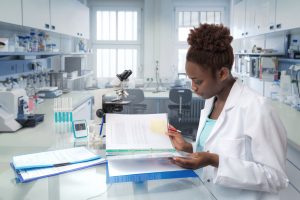
Mycology – the study of mushrooms – is a vast and exciting field of science, a branch of biology that is researched and studied not only in professional laboratories, such as in university labs and in other, dedicated, purpose-built facilities, and not only by career biologists, but by amateurs as well, in the sterile labs they set up at home. As a matter of fact, mycology is among the most common hobbies of biology enthusiasts, allowing those passionate about nature to follow how the various species in one of nature’s most exciting and most populous kingdoms, that of the fungi, develop and thrive.
One of the most exciting research areas for amateur mycologists is the field of experiments with psilocybe spores – if you have long been interested in becoming an amateur mycologist to research mushroom spores, here are some things that you should know about the required tools and the related activities.
How to Set Up Your Lab
Like any lab, the mushroom lab needs to be a sterile environment that must be protected from all contamination. You can achieve a reasonable level of sterility by ensuring that no one enters the lab in the clothes they wear elsewhere and that the objects in your lab are touched only after thorough hand cleaning and after having put on proper protection gear. If you can afford to invest more into your lab, you might want to take sterility even further and install air purifiers, HEPA air filters or UV air cleaning lamps. You will also need protective gear for yourself – think disposable surgical masks and full, disposable suits to wear.
You will be conducting your research sitting by a table, so you will need adequate workspace, suitably sized to accommodate all your tools and made from a material that can be kept clean easily. As for the equipment and the accessories that you will need, your inventory should include petri dishes (disposable items are best), parafilm to seal your dishes, a pressure cooker for sterilization purposes, scalpels and blades, isopropyl alcohol to clean your table and your tools. One of the most important pieces of equipment in your lab will be the microscope, preferably one with a large range of magnification settings.
Another thing to pay attention to is proper ventilation – you should set up your lab in a room that can be efficiently ventilated, but that is completely separated from the living areas in your home.
Your Activities
There are really many experiments and activities that you can try in your home mycology lab. The most common tasks include preparing your own spore prints – a fun activity that will teach you a lot about mushrooms and will help you become an expert in identifying them; watching spores change and develop and viewing mycelia. Once you get started with your spore research project, you will learn a lot of exciting things about mushrooms and you will soon be able to determine your own direction in research. The process will probably extend your horizons in terms of the equipment that best works for you, so you will surely learn a lot about technical aspects, tools and devices and methods to implement in your research.



